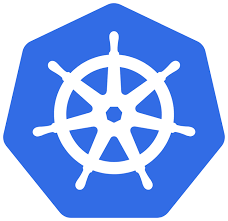Learn how to solve the kubectl a container name must be specified for pod error with commands, causes, and prevention tips for smooth debugging. Our Kubernetes Support Team is always here to help you.
kubectl a container name must be specified for pod – Explained with Commands
When working with Kubernetes, one common error developers come across is kubectl a container name must be specified for pod. It usually appears when you try to run commands on a pod that has more than one container. The system simply doesn’t know which container you are targeting unless you tell it clearly. Let’s walk through why this happens, the possible causes, and how you can resolve it with the right commands.

An Overview
What the Error Looks Like
You will generally see the syntax appear like this:
Error from server (BadRequest): a container name must be specified for pod <pod_name>, choose one of: [<container1> <container2>]This means the pod has multiple containers, and you must point out the container you want to interact with.
Why This Error Matters
- You can’t pull logs from a specific container unless you mention the name.
- Executing commands for troubleshooting inside a container won’t work.
- It often adds extra debugging time.
- Workflows get interrupted, slowing down deployments or maintenance.
- It may even highlight configuration problems with your pod.
Causes and How to Address Them
1. Missing Container Name in Command
When you run commands like kubectl logs or kubectl exec on multi-container pods without specifying the container, Kubernetes blocks the request.
Use:
kubectl logs <pod_name> -c <container_name>2. Incorrect Command Syntax
Even a small syntax error can trigger this. Always check the structure.
Correct usage:
kubectl exec <pod_name> -c <container_name> -- <command>3. Pod Configuration Issues
Sometimes, the pod itself is not well-defined. To verify container names and configuration, run Kubernetes Security Best Practices:
kubectl get pod <pod_name> -o yaml4. Copy-Paste Errors
Extra spaces or hidden characters often cause issues. Typing commands carefully or using a clean editor helps.
5. Multiple Containers with Similar Names
When names are too close, confusion is common. Give unique and descriptive names in your YAML, for example:
containers:
- name: web-server
image: nginx
- name: database-server
image: postgres6. Environment Variable Misconfiguration
Sometimes environment variables don’t line up, which affects execution. To confirm, run:
kubectl describe pod <pod_name>7. Incorrect Context or Namespace
Running the command in the wrong context or namespace can lead to the error. Check with:
kubectl config current-context
kubectl config view --minify | grep namespace:Switch if needed:
kubectl config use-context <context_name>8. Version Compatibility Issues
A mismatch between kubectl and the Kubernetes cluster version can cause unexpected problems. To confirm, check:
kubectl version --shortUpdate or align versions as required.
How to Prevent It Going Forward
- Always include -c <container_name> when dealing with multi-container pods.
- Keep container names unique and descriptive.
- Test your YAMLs in staging before pushing to production and explore top Kubernetes tools to help manage your cluster efficiently.
- Maintain proper documentation of pod structures.
- Use scripts to automate frequent kubectl commands with correct syntax.
[If needed, Our team is available 24/7 for additional assistance.]
Conclusion
The kubectl a container name must be specified for pod error is more of a guidance than a blocker. Kubernetes is simply telling you to be precise. By remembering to specify the container and double-checking your commands and configurations, you can save time and avoid unnecessary debugging loops.







0 Comments